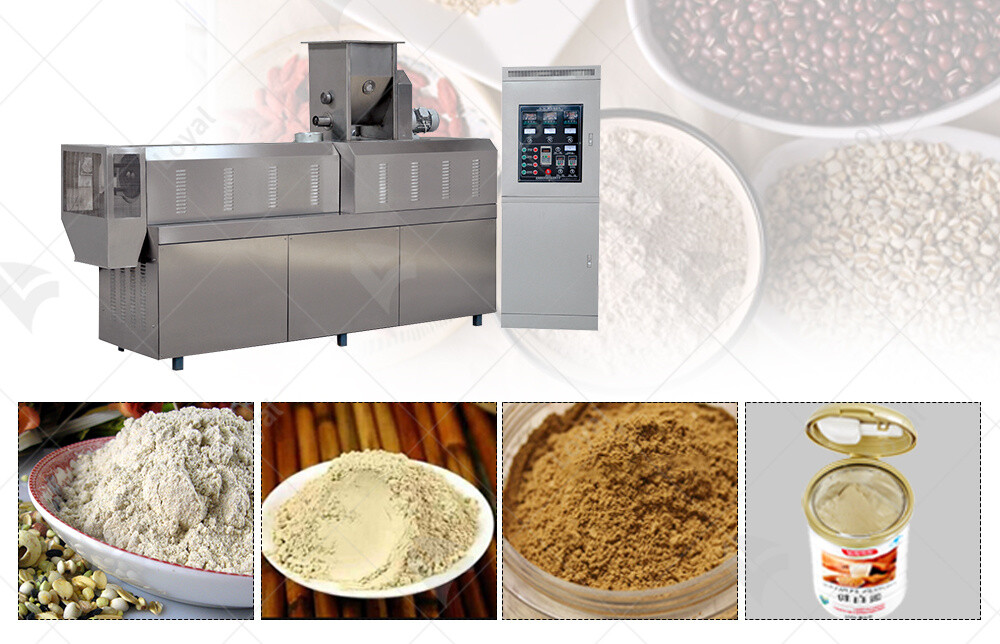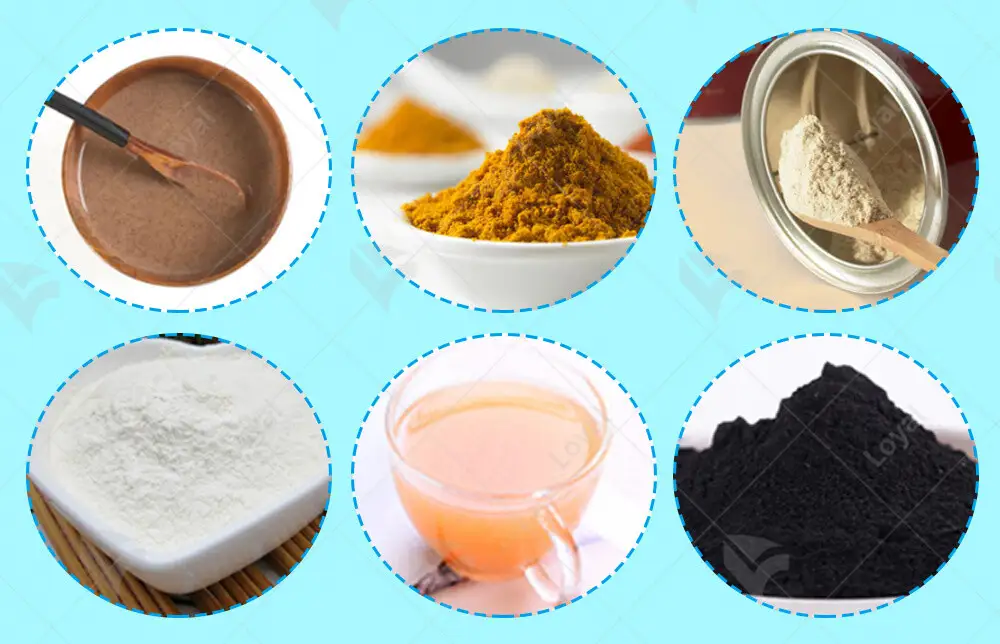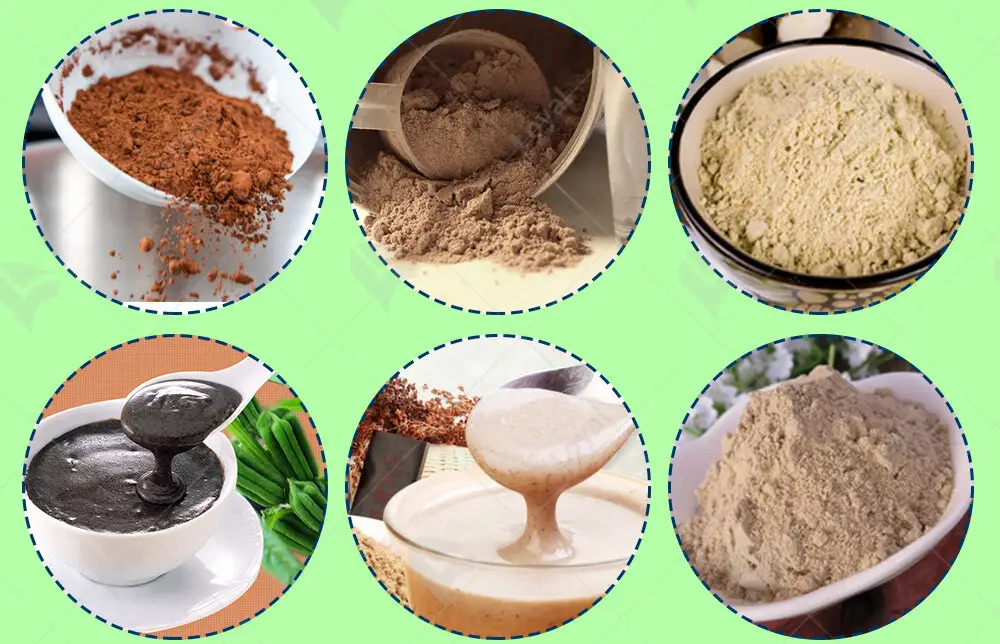Unlock The Secrets Of Efficient Nutrition Rice Powder Machine Manufacturing
Introduction to Nutrition Rice Powder Machines
Nutrition rice powder machines play a pivotal role in the food processing industry, specifically designed to produce high-quality rice powder enriched with essential nutrients. These machines are engineered to transform raw rice grains into fine, nutritious powder forms, catering to diverse consumer demands for healthy food products. Incorporating advanced technologies, nutrition rice powder machines streamline the production process, ensuring efficiency and consistency in output.
The primary function of nutrition rice powder machines revolves around grinding and processing rice into powdered form while preserving its nutritional value. This process involves meticulous control over factors such as moisture levels, temperature, and grinding intensity to achieve optimal results. Manufacturers often integrate these machines with precision-engineered components like stainless steel grinding blades and automated control systems to enhance reliability and performance.
Key considerations when choosing a nutrition rice powder machine include capacity, efficiency, and the ability to maintain nutritional integrity during processing. These machines are versatile, accommodating various types of rice and adaptable to different production scales—from small-scale operations to large industrial setups. Moreover, they are equipped with safety features and ergonomic designs to facilitate ease of operation and maintenance, ensuring operational continuity and product quality consistency.
Innovations in nutrition rice powder machine technology continue to drive advancements in the industry. Modern machines are equipped with digital interfaces for real-time monitoring and adjustment of processing parameters, promoting precision and minimizing production downtime. Furthermore, ongoing research and development efforts focus on enhancing energy efficiency and sustainability, aligning with global trends towards eco-friendly food processing solutions.
Overall, nutrition rice powder machines represent a critical asset in the food manufacturing sector, meeting the growing demand for nutritious food products. Their role in efficiently transforming rice into powdered nutritional supplements underscores their importance in promoting health-conscious consumer choices. As technology evolves and consumer preferences shift, these machines remain integral to the future of food processing, supporting sustainable and innovative practices in the industry.

Key Components of a Nutrition Rice Powder Machine
| Component | Description |
| Feeding System | Transfers raw materials into the machine consistently and efficiently. |
| Grinding Mechanism | Breaks down grains into fine powder, crucial for the production process. |
| Mixing Chamber | Blends different ingredients uniformly to achieve desired nutritional blends. |
| Heating and Drying Units | Applies controlled heat to evaporate moisture, ensuring powder consistency. |
| Control Panel | Monitors and regulates machine operations, including temperature and speed. |
| Cooling System | Cools down the processed powder before packaging to maintain quality. |
| Packaging Unit | Automates filling and sealing of powder into bags or containers. |
| Safety Features | Includes sensors and emergency stop mechanisms to ensure operator safety. |
| Cleaning Mechanism | Facilitates easy maintenance by enabling thorough cleaning between batches. |
| Material Quality Sensors | Ensures raw materials meet specified standards before processing. |

Benefits of Using Nutrition Rice Powder Machines
Nutrition rice powder machines offer several significant benefits in industrial food processing. Firstly, these machines streamline the production process, enhancing efficiency and reducing manual labor. By automating the grinding and processing of rice into powder form, they enable consistent output quality, meeting stringent food safety standards.
Secondly, nutrition rice powder machines improve product versatility. They can handle various types of rice and other grains, allowing manufacturers to diversify their product offerings without extensive retooling. This versatility is crucial in meeting market demands for specialized nutritional products.
Moreover, these machines enhance cost-effectiveness in production. By minimizing waste and optimizing raw material utilization, they contribute to lower operational costs over time. This cost efficiency is further bolstered by reduced energy consumption and maintenance requirements, making them a sustainable choice for food processing facilities.
Furthermore, nutrition rice powder machines play a vital role in maintaining product integrity. They ensure uniform particle size and consistency, which are essential for creating powders that dissolve easily and evenly in liquids. This consistency improves consumer satisfaction and reinforces brand reputation in the competitive food industry.
The benefits of using nutrition rice powder machines are clear: they enhance production efficiency, product versatility, cost-effectiveness, and product integrity. These advantages not only streamline manufacturing processes but also contribute to meeting consumer demands for high-quality, nutritional food products.

Factors to Consider When Choosing a Nutrition Rice Powder Machine
When selecting a nutrition rice powder machine, several crucial factors must be considered to ensure optimal performance and suitability for specific manufacturing needs. These factors not only affect operational efficiency but also impact product quality and overall production costs.
Firstly, technology and features play a pivotal role in the selection process. Modern nutrition rice powder machines integrate advanced technologies such as automated processing, precision control systems, and efficient energy utilization. These features not only enhance productivity but also ensure consistent quality output, meeting stringent manufacturing standards.
Secondly, production capacity is a critical consideration. Depending on the scale of production required, choosing a machine with the appropriate capacity is essential. Smaller-scale operations may opt for compact models with lower output capacities, while larger facilities benefit from high-capacity machines capable of handling substantial volumes efficiently.
Moreover, versatility in processing capabilities is another key factor. A versatile nutrition rice powder machine should accommodate various types of raw materials and be adaptable to different production requirements. This flexibility enables manufacturers to diversify their product offerings and respond swiftly to market demands, enhancing overall competitiveness.
Furthermore, maintenance and support are vital aspects to evaluate. Opting for a machine with a reliable maintenance program and accessible technical support ensures minimal downtime and efficient troubleshooting. Manufacturers should consider the availability of spare parts and the reputation of the manufacturer or supplier for prompt service delivery.
The decision-making process when selecting a nutrition rice powder machine should prioritize technological advancements, production capacity, versatility in processing capabilities, and reliable maintenance and support. These factors collectively contribute to optimizing operational efficiency, ensuring product quality consistency, and maintaining cost-effectiveness in industrial food machinery applications.

Types of Nutrition Rice Powder Machines
Nutrition rice powder machines are versatile tools designed to process rice and other grains into nutritious powder forms. They cater to various needs in the food processing industry, offering different functionalities based on specific requirements. Here are the key types of nutrition rice powder machines commonly used:
1. Grinding Mills:
Grinding mills are foundational in nutrition rice powder processing. They utilize grinding mechanisms to break down rice grains into fine powder. These machines often feature adjustable settings for particle size, catering to diverse culinary applications from infant food to health supplements.
2. Extrusion Machines:
Extrusion machines are pivotal for producing nutrition rice powders through a continuous process. They involve forcing moistened rice or rice flour through a shaped die under high pressure and temperature. This method enhances the nutritional value by preserving vitamins and minerals while shaping the powder into desired forms.
3. Blending and Mixing Systems:
Blending and mixing systems combine various ingredients to create customized nutrition rice powders. These machines ensure uniform distribution of vitamins, minerals, and additives, enhancing the nutritional profile and taste. They are crucial for achieving consistency and quality in the final product.
4. Packaging Machines:
Packaging machines play a critical role in the nutrition rice powder manufacturing process. They automate the packaging of the powdered product into bags, sachets, or containers of different sizes. These machines ensure efficiency, hygiene, and extended shelf life, meeting consumer demands for convenience and safety.
The diversity of nutrition rice powder machines reflects the multifaceted demands of modern food processing. From grinding mills that refine grains into fine powders to advanced extrusion systems that preserve nutrients, each type serves a distinct purpose in delivering high-quality, nutritious products to the market. Understanding these machine types is essential for businesses aiming to optimize their production processes and meet the growing consumer demand for healthy food options.

Innovations and Trends in Nutrition Rice Powder Machine Technology
In recent years, the field of nutrition rice powder machine technology has witnessed significant advancements aimed at enhancing efficiency, quality, and versatility in food processing industries. These innovations cater specifically to the demand for nutritious food products derived from rice and other grains, meeting consumer preferences for healthier dietary options.
One prominent trend in nutrition rice powder machines is the integration of advanced automation and digital control systems. Modern machines are equipped with intuitive interfaces that allow operators to monitor and adjust processing parameters in real-time. This not only improves production efficiency but also ensures consistent product quality by minimizing human error.
Furthermore, there has been a notable shift towards sustainability in the design and operation of nutrition rice powder machines. Manufacturers are increasingly adopting eco-friendly practices such as energy-efficient components and materials, reducing both operational costs and environmental impact. This trend aligns with global initiatives towards sustainable food production and consumption.
Another significant innovation is the enhancement of processing capabilities to cater to diverse nutritional requirements. Newer models of nutrition rice powder machines are capable of producing a wider range of textures and formulations, accommodating varying consumer preferences and dietary needs. This flexibility is achieved through advanced milling, mixing, and blending technologies integrated into the machines.
Looking ahead, the future of nutrition rice powder machine technology is poised for further advancements in precision and customization. Emerging technologies such as artificial intelligence and machine learning are expected to play a pivotal role in optimizing production processes, predicting maintenance needs, and further improving product consistency and quality.
The ongoing innovations and trends in nutrition rice powder machine technology underscore the industry's commitment to enhancing efficiency, sustainability, and product quality. As technology continues to evolve, these advancements not only address current market demands but also pave the way for future developments in the food processing industry.

Future Outlook for Nutrition Rice Powder Machine Manufacturing
The future outlook for nutrition rice powder machine manufacturing is promising, driven by technological advancements and increasing demand for nutritious food processing solutions. As industries continue to prioritize efficiency and health-conscious products, the role of these machines is expected to expand significantly. Manufacturers are investing heavily in research and development to enhance machine capabilities, ensuring they meet evolving consumer preferences and regulatory standards.
Innovations in automation are set to revolutionize the industry, streamlining production processes and reducing operational costs. Advanced robotics and AI-driven systems are being integrated into nutrition rice powder machines, allowing for precise control over mixing, grinding, and packaging stages. This automation not only improves consistency in product quality but also boosts overall productivity, making manufacturing operations more sustainable and profitable.
Additionally, sustainability is becoming a key focus in nutrition rice powder machine manufacturing. Manufacturers are adopting eco-friendly practices and materials to minimize environmental impact. From energy-efficient designs to biodegradable packaging solutions, these initiatives aim to meet consumer demands for sustainable products while complying with stringent environmental regulations.
Furthermore, globalization is shaping the future of nutrition rice powder machine manufacturing. As markets become more interconnected, manufacturers are expanding their reach and adapting machines to meet diverse regional requirements. This global expansion offers opportunities for collaboration and knowledge exchange, driving innovation and enhancing market competitiveness.
In conclusion, the future of nutrition rice powder machine manufacturing looks promising with advancements in technology, a focus on sustainability, and global market expansion. As demand grows for nutritious food products, manufacturers are poised to capitalize on these trends by delivering efficient, high-quality machines that meet the needs of both consumers and industry regulations.
References
1.Food Processing Technology - www.foodprocessing-technology.com
2.Food Engineering Magazine - www.foodengineeringmag.com
3.ProFood World - www.profoodworld.com
4.Food Manufacturing - www.foodmanufacturing.com
5.International Society of Automation (ISA) - www.isa.org












